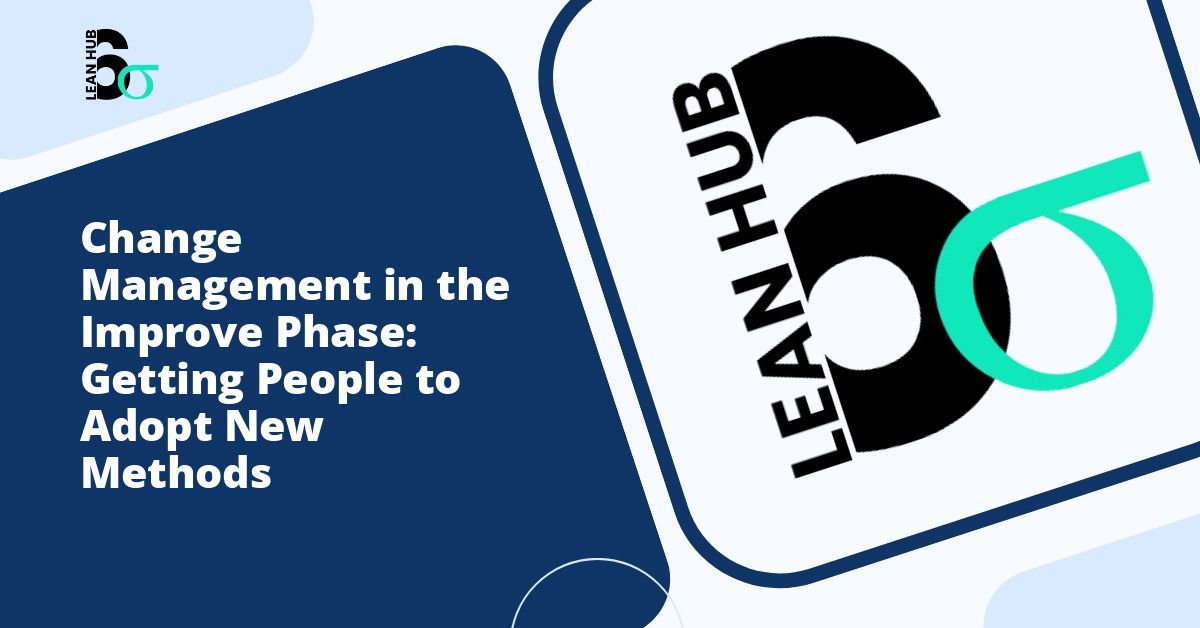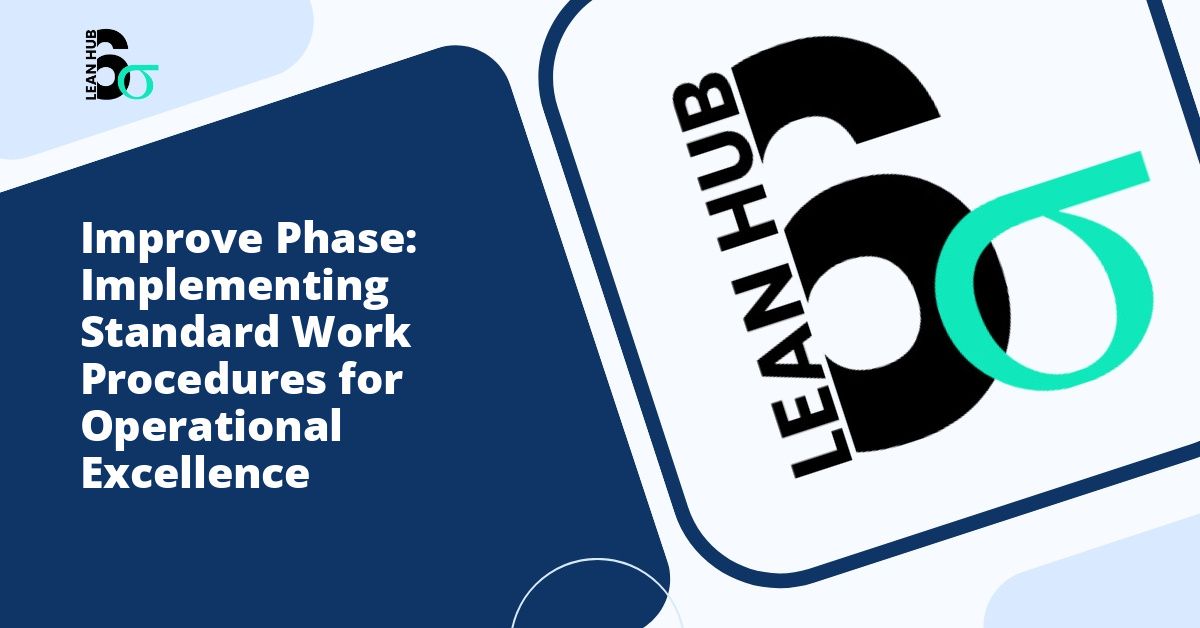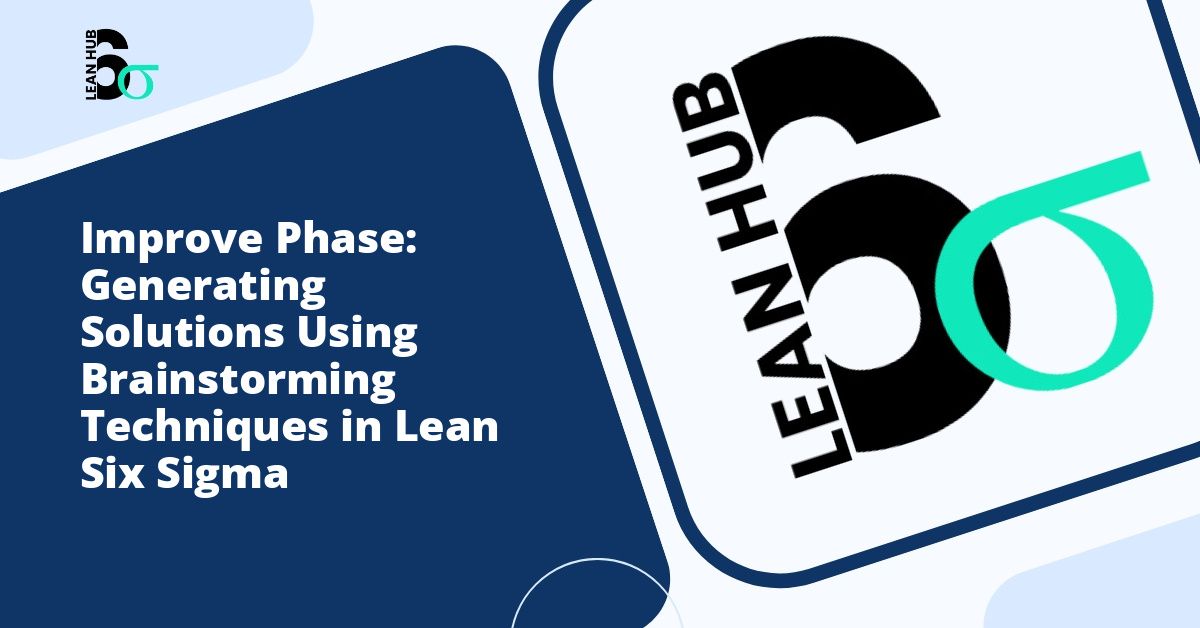Organizational change can be one of the most challenging aspects of process improvement, particularly during the Improve phase of Lean Six Sigma projects. Even when new methods promise significant benefits, resistance from team members and stakeholders can derail implementation efforts. Understanding how to effectively manage change and encourage adoption of new processes is critical for achieving sustainable improvements and realizing the full potential of your improvement initiatives.
Understanding the Improve Phase in Process Improvement
The Improve phase represents a pivotal moment in any lean six sigma project. This is where theoretical solutions transform into practical implementations, and where carefully analyzed data translates into actionable changes. During this phase, organizations move from identifying problems and developing solutions to actually implementing new methods, processes, and systems. You might also enjoy reading about Design of Experiments Explained: Testing Multiple Variables Simultaneously for Better Results.
However, the technical aspects of improvement represent only half the challenge. The human element of change management often determines whether improvements succeed or fail. Without proper attention to how people experience and adapt to change, even the most well-designed solutions can face overwhelming resistance. You might also enjoy reading about Pilot Study Design: How to Structure Your Improvement Test for Success.
The Psychology of Change Resistance
Before diving into strategies for managing change, it is essential to understand why people resist new methods. Resistance typically stems from several sources: You might also enjoy reading about How to Run a Successful Kaizen Event: Complete Implementation Guide for Continuous Improvement.
- Fear of the unknown: Employees feel comfortable with familiar processes, even when those processes are inefficient. New methods introduce uncertainty about their ability to perform effectively.
- Loss of competence: Workers who have mastered existing processes may fear losing their status as experts when new methods require different skills.
- Increased workload: Learning new methods requires time and effort on top of existing responsibilities, creating a temporary burden.
- Lack of trust: Previous failed improvement initiatives can create skepticism about new changes.
- Inadequate communication: When people do not understand why changes are necessary, they are less likely to support them.
Recognizing these psychological barriers is the first step toward addressing them effectively. The recognize phase of understanding resistance helps leaders develop targeted strategies for overcoming objections and building buy-in.
Building a Foundation for Successful Adoption
Involve Stakeholders Early
One of the most effective strategies for encouraging adoption is involving end users and stakeholders throughout the improvement process. When people participate in designing solutions, they develop ownership over the outcomes. This involvement should begin well before the Improve phase, ideally during the initial problem identification and analysis stages.
Create cross-functional teams that include representatives from all affected areas. These team members serve as change champions who can advocate for new methods among their peers. Their early involvement also ensures that solutions account for practical realities and potential implementation challenges that might not be visible from a purely analytical perspective.
Communicate the Why Behind Changes
Effective change management requires transparent, consistent communication about why improvements are necessary. People need to understand not just what is changing, but why the current state is problematic and how new methods will benefit them personally and professionally.
Develop a compelling narrative that connects the improvement initiative to broader organizational goals and individual concerns. Share data that illustrates the problems with current processes and projections showing how new methods will improve outcomes. Make this communication ongoing rather than a one-time announcement, and create opportunities for dialogue where people can ask questions and express concerns.
Practical Strategies for the Improve Phase
Implement Pilot Programs
Rather than rolling out changes across an entire organization simultaneously, consider implementing pilot programs in limited areas. This approach offers several advantages. First, it allows you to test new methods in a controlled environment where you can identify and address unforeseen issues. Second, it creates proof of concept that demonstrates benefits to skeptical stakeholders. Third, it develops a core group of experienced users who can mentor others during broader rollout.
Document the pilot program carefully, capturing both successes and challenges. Use this information to refine implementation strategies and develop more effective training materials for subsequent phases.
Provide Comprehensive Training
Inadequate training is a common reason why new methods fail to gain traction. People cannot adopt processes they do not understand or feel incompetent executing. Develop training programs that go beyond simple instruction to build genuine competence and confidence.
Effective training should include multiple components. Classroom or virtual instruction can provide foundational knowledge. Hands-on practice with new tools and methods builds skills. Job aids and reference materials offer ongoing support after initial training. Mentoring and coaching help people navigate challenges as they arise during real-world application.
Recognize that people learn at different paces and through different modalities. Offering varied training approaches increases the likelihood that everyone achieves the competence necessary for successful adoption.
Create Support Systems
The period immediately following implementation is critical. People will encounter questions, challenges, and obstacles as they begin applying new methods. Without adequate support, frustration can quickly undermine adoption efforts.
Establish clear channels for getting help and answering questions. This might include dedicated support personnel, online forums or chat channels, regular check-in meetings, or a buddy system pairing experienced users with those still learning. Make sure people know where to turn when they need assistance and that seeking help is encouraged rather than stigmatized.
Leveraging Lean Six Sigma Principles
The principles of lean six sigma themselves offer valuable guidance for managing change during the Improve phase. The focus on data-driven decision making, continuous improvement, and respect for people aligns naturally with effective change management.
Use metrics to track adoption rates and identify areas where people are struggling. This data can reveal whether resistance stems from inadequate training, flawed processes, or other factors. Apply root cause analysis techniques to understand obstacles to adoption, then develop targeted interventions.
The lean principle of respect for people reminds us that those doing the work often have the best insights into what will and will not work. Create mechanisms for gathering feedback about new methods and be willing to make adjustments based on that input. This demonstrates genuine respect and builds trust that increases willingness to embrace change.
Recognizing and Celebrating Progress
As people begin adopting new methods, recognition and celebration reinforce positive behaviors and build momentum. The recognize phase of implementation involves actively acknowledging individuals and teams who embrace changes and achieve results.
Recognition does not necessarily require elaborate reward systems. Sometimes simple acknowledgment of effort and achievement is sufficient. Share success stories that highlight how new methods are improving outcomes. Celebrate milestones in the adoption process. Feature change champions who exemplify the desired behaviors.
This positive reinforcement creates social proof that encourages others to follow suit. It also provides encouragement to those who have invested time and effort in learning new approaches.
Sustaining Change Over Time
Getting people to initially adopt new methods is only the beginning. Sustaining those changes over time requires ongoing attention and effort. Without reinforcement, people naturally drift back toward familiar patterns, particularly when facing stress or time pressure.
Build new methods into standard operating procedures and performance expectations. Update training programs for new employees to include improved processes from the start. Conduct periodic audits to ensure compliance and identify areas where refresher training might be needed. Continue measuring and communicating results that demonstrate the value of improvements.
Most importantly, foster a culture of continuous improvement where change is viewed not as a disruptive exception but as a normal part of organizational life. When people expect and embrace ongoing evolution, each subsequent improvement initiative faces less resistance.
Conclusion
Change management during the Improve phase determines whether process improvements deliver theoretical benefits or practical results. By understanding the psychology of resistance, involving stakeholders early, communicating effectively, providing comprehensive training and support, and recognizing progress, organizations can significantly increase adoption rates for new methods.
The investment in thoughtful change management pays dividends not only for the immediate improvement initiative but also for future projects. Each successful change builds organizational capacity for adaptation and creates momentum for continuous improvement. In today’s rapidly evolving business environment, this capability represents a significant competitive advantage that extends far beyond any single process improvement.








